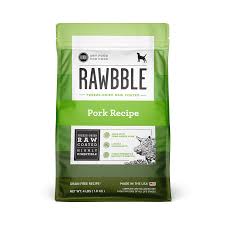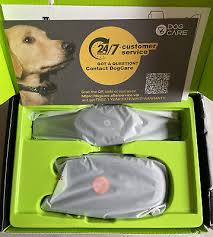The Benefits of Dry Dog Food
Dry dog food, also known as kibble, is a popular choice for many pet owners due to its convenience, affordability, and nutritional benefits. Here are some reasons why dry dog food may be the right choice for your furry friend:
Convenience
One of the main advantages of dry dog food is its convenience. It has a long shelf life and can be easily stored without the need for refrigeration. This makes it ideal for pet owners who lead busy lives or travel frequently with their pets.
Affordability
Compared to wet or raw diets, dry dog food is generally more affordable. It offers a cost-effective way to provide your dog with essential nutrients without breaking the bank. Many brands offer a range of options to suit different budgets and dietary requirements.
Nutritional Benefits
Most high-quality dry dog foods are formulated to provide a balanced diet that meets your dog’s nutritional needs. They contain essential vitamins, minerals, and proteins to support your dog’s overall health and well-being. Additionally, many dry dog foods are designed to promote good dental health by helping to reduce plaque and tartar buildup.
Variety of Options
There is a wide variety of dry dog food options available on the market to cater to different breeds, sizes, ages, and dietary preferences. Whether your dog has specific dietary requirements or preferences, you can find a dry food formula that meets their needs.
Conclusion
Dry dog food offers numerous benefits for both pets and owners alike. Its convenience, affordability, nutritional value, and variety make it a popular choice among pet owners looking to provide their dogs with a well-rounded diet. However, it’s essential to choose a high-quality brand that meets your dog’s specific nutritional needs for optimal health and happiness.
6 Essential Tips for Feeding Your Dog Dry Food Safely and Effectively
- Store dry dog food in a cool, dry place to maintain freshness.
- Follow the feeding guidelines on the packaging to ensure proper nutrition for your dog.
- Gradually transition your dog to a new dry food to avoid digestive upset.
- Provide fresh water alongside dry dog food at all times.
- Monitor your dog’s weight and adjust the portion size of dry food accordingly.
- Consult with a veterinarian if you have concerns about your dog’s diet or health.
Store dry dog food in a cool, dry place to maintain freshness.
To maintain the freshness of dry dog food, it is essential to store it in a cool, dry place. Exposure to heat and moisture can lead to the degradation of nutrients and the growth of mold or bacteria in the food. By storing dry dog food in a cool, dry environment, pet owners can ensure that their furry companions receive the full nutritional benefits of their meals while also extending the shelf life of the food for long-lasting freshness.
Follow the feeding guidelines on the packaging to ensure proper nutrition for your dog.
It is crucial to follow the feeding guidelines provided on the packaging of dry dog food to ensure that your furry companion receives the proper nutrition they need. These guidelines are carefully formulated to meet your dog’s specific dietary requirements based on factors such as age, weight, and activity level. By following these recommendations, you can help maintain your dog’s overall health and well-being, ensuring they receive the right balance of nutrients for a happy and healthy life.
Gradually transition your dog to a new dry food to avoid digestive upset.
When switching your dog to a new dry food, it is important to do so gradually to prevent digestive upset. Abrupt changes in diet can lead to gastrointestinal issues such as diarrhea or vomiting. To ease the transition, mix small amounts of the new food with the old food over a period of about a week, gradually increasing the ratio of the new food. This gradual approach allows your dog’s digestive system to adjust to the new food more easily, ensuring a smooth and comfortable transition to their new diet.
Provide fresh water alongside dry dog food at all times.
It is crucial to provide fresh water alongside dry dog food at all times. Water plays a vital role in a dog’s overall health and well-being, aiding in digestion, regulating body temperature, and ensuring proper hydration. By keeping a bowl of clean, fresh water accessible to your furry companion throughout the day, you help them stay hydrated and maintain optimal health. This simple practice can make a significant difference in your dog’s overall happiness and vitality.
Monitor your dog’s weight and adjust the portion size of dry food accordingly.
It is crucial to monitor your dog’s weight regularly and adjust the portion size of dry food accordingly. Just like humans, dogs’ nutritional needs can vary based on factors such as age, activity level, and metabolism. By keeping an eye on your dog’s weight and adjusting their food portions as needed, you can help maintain their optimal health and prevent issues such as obesity or malnourishment. Consulting with your veterinarian for guidance on portion sizes based on your dog’s individual needs is always a good idea to ensure they are getting the right amount of nutrition to thrive.
Consult with a veterinarian if you have concerns about your dog’s diet or health.
It is crucial to consult with a veterinarian if you have any concerns about your dog’s diet or health, especially when it comes to choosing the right type of dry dog food. Veterinarians can provide valuable insights and recommendations based on your dog’s specific needs, such as dietary restrictions, allergies, or health conditions. Seeking professional advice ensures that your furry companion receives the best possible care and nutrition tailored to their individual requirements.




